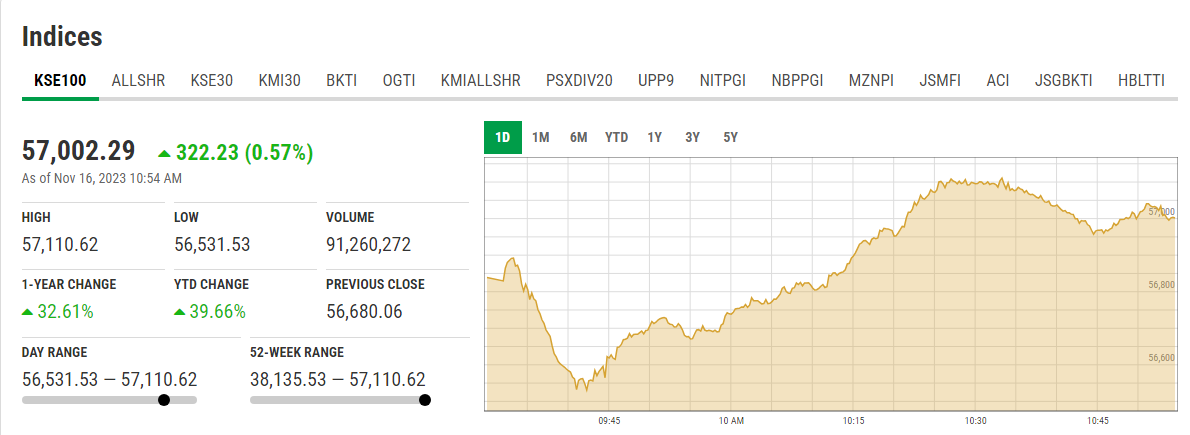Rupee breaks 17-session losing streak against the dollar while PSX goes past 57,000 points during intraday trade
Following the staff-level agreement between Pakistan and the International Monetary Fund (IMF), the Pakistan Stock Exchange’s (PSX) benchmark KSE-100 index rallied past 57,000 points while the rupee also recovered against the dollar during the intraday trade in the interbank market.
Pakistan, a day earlier, had reached a staff-level agreement with the IMF on the first review of a $3 billion bailout.
After approval from the Fund’s Executive Board, Pakistan will have access to around $700 million, bringing total disbursements under the program to almost $1.9 billion, the IMF announced in a statement on Wednesday.
Today, the rupee broke its 17-session losing streak after it gained 2.14 against the dollar and is being traded at Rs286 against the greenback in the interbank market during intraday trade, reported Geo News. The local currency had closed at Rs288.14 on Wednesday.
At the PSX, the benchmark KSE-100 Index went past 57,000 points at around 10:20 am, creating another milestone.

In a conversation with Geo. tv, Dr Khaqan Hassan Najeeb, a former adviser of the finance ministry, said that the PSX buoyed due to the staff-level agreement with the IMF. He added that the $700 million from the global lender will help Pakistan make way for “much-needed” external financing.
“IMF’s approval means that the government has worked on fiscal consolidation as well as the change in energy prices which curtails the circular debt,” said Dr Najeeb.
The economist believes that the external financing “flow will give some comfort to the forex market as well as the supply side increase and the debt instruments including the financing from multilateral, both program and project loans”.
He added that loans from bilateral and rollovers, friendly countries and commercial funds will start flowing in after the IMF agreement.
“The rupee will of course be determined by the kind of flows that we see and the kind of demand that is generated on the import side. In the long run, I always say the rupee parity with any foreign currency is a function of the productivity of the country,” said Dr Najeeb on the rupee’s appreciation.
Courtesy: Geo News




